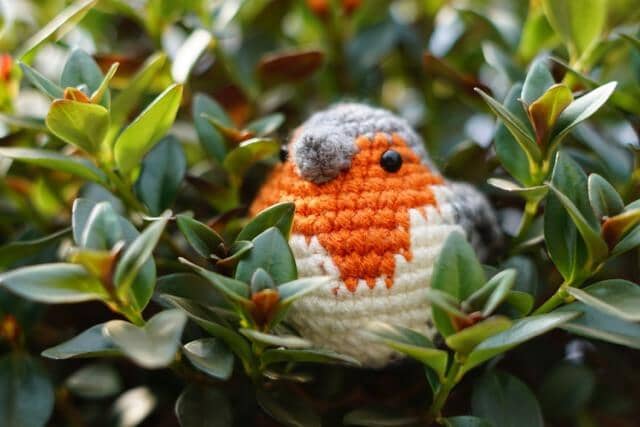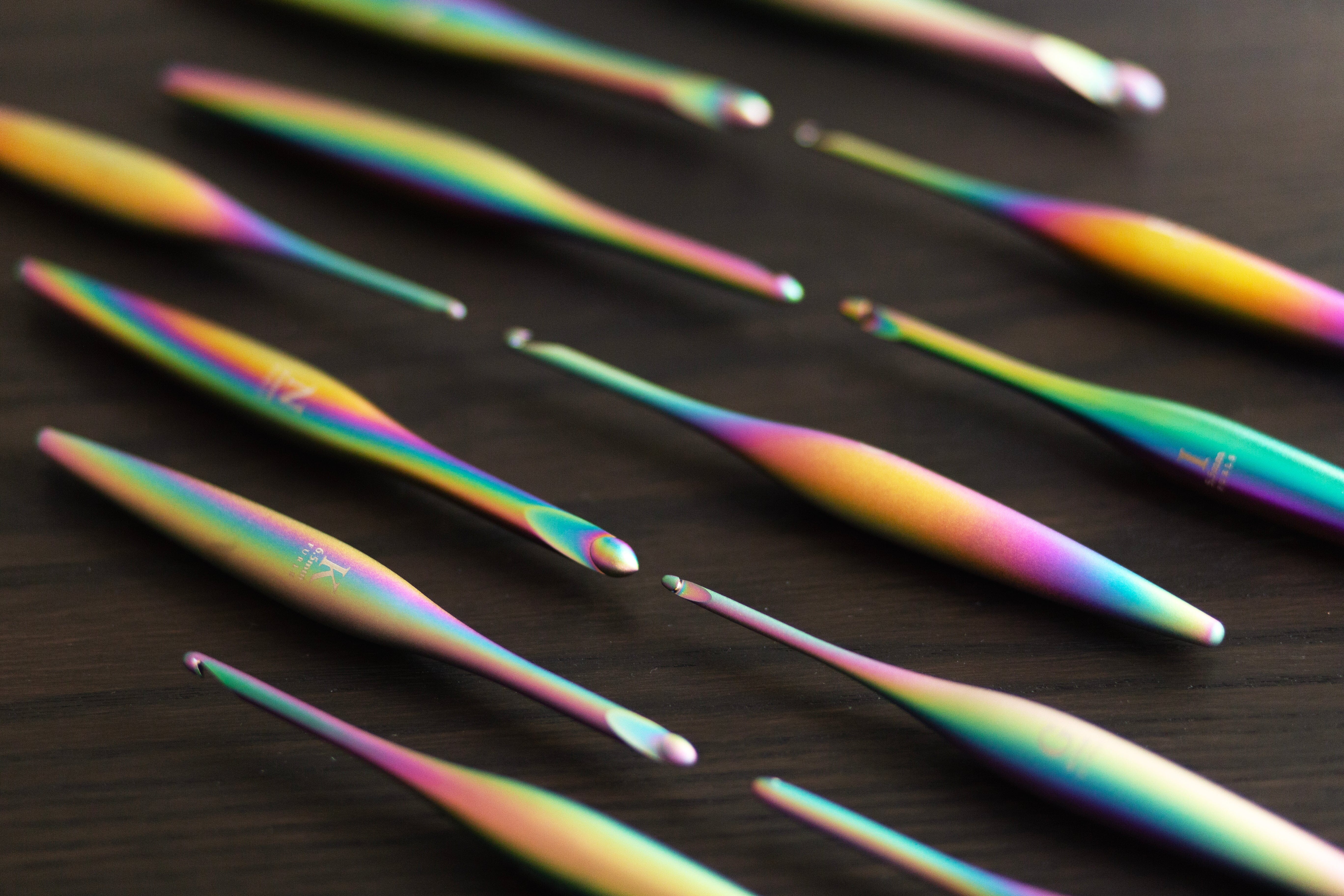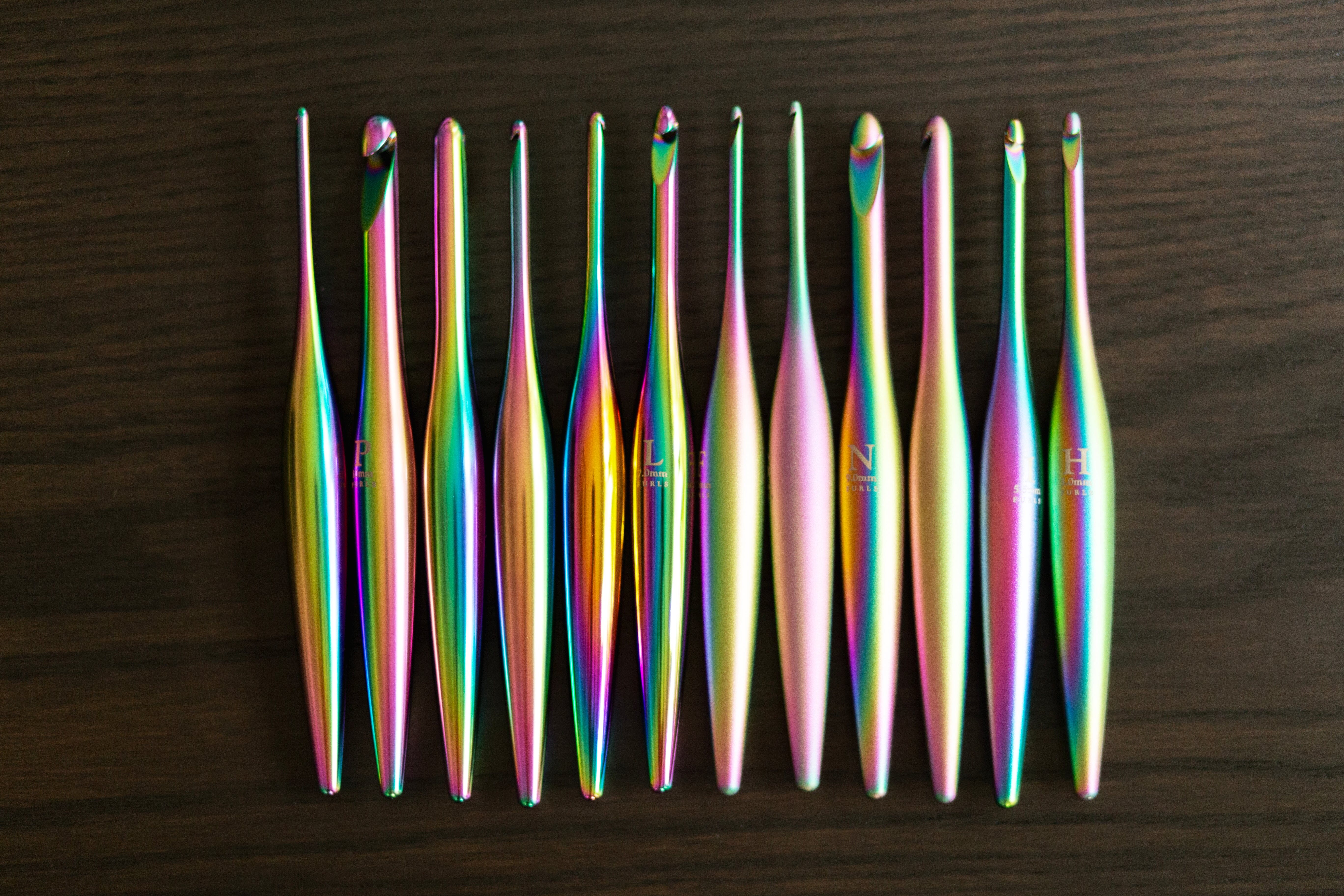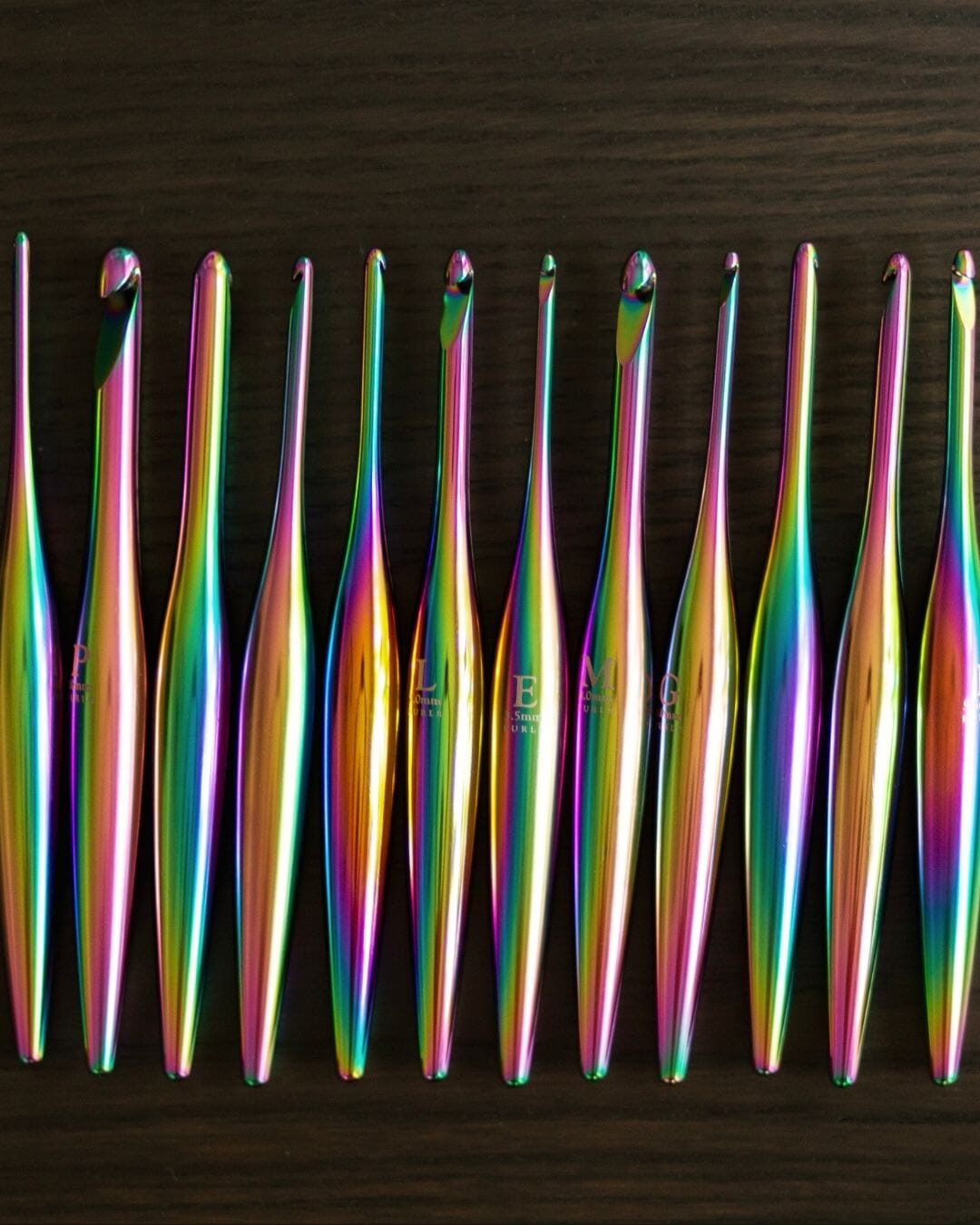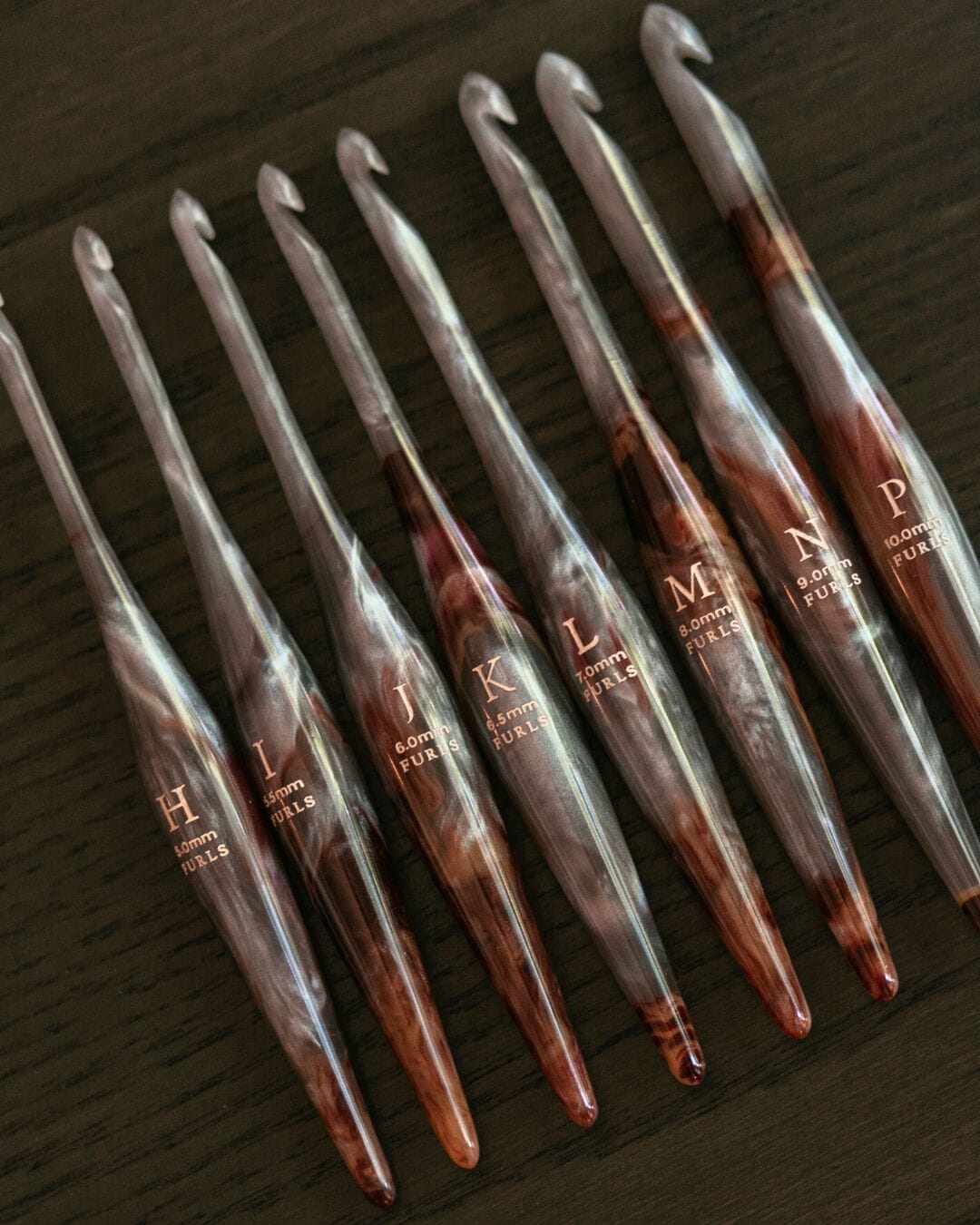We love our naturalistic amigurumi patterns, and this one is exceptional: the English Robin!
It’s officially spring and the weather’s still testing boundaries-- it’s always this time of year that I dig out The Secret Garden by Frances Hodgson Burnett and curl up to read about tiny green sprouts peeking through the thawing soil and little round robins making friends and thawing hearts. This week we’ll be making our own little Robin Redbreast as we start thinking about how our own gardens grow.
Updated 3/18/2025

MATERIALS
- Knit Picks Wool of the Andes Superwash Bulky in (A) Marble Heather, (B) Persimmon Heather and (C) White
- Furls Streamline Metal Crochet Hook size G (4.0mm) or G+ (4.5mm)
- 6mm black safety eyes
- Yarn/tapestry needle
- Stuffing
- Stitch marker (I use a small scrap of yarn)
- Sewing pins (optional)
- Scissors
ABBREVIATIONS
Ch = chain
Sc = single crochet
Slp st = slip stitch
Sk = skip
Dec = decrease
Rep = repeat
PM = place marker
2x, 3x, etc = 2 times, 3 times, etc
Finished size: about 3" tall and 4" long
The head and body of the English robin are worked in one continuous round with color changes, noted within the lines of the pattern. To make sure you don't lose your place, mark the beginning of each new round with a stitch marker. The tail is also worked in the round but the wings and beak are worked flat.
Assembly info follows under each component's pattern.
Troubleshooting
COLOR CHANGE WOES? Everybody's stitches tend to spiral differently when working in the round. If you're following the color changes and not getting the same result, just follow the base pattern for the shape of the bird and wing the color changes. Here are some photo references to help out:



With color A, ch 2 / magic loop
1. 6 sc in 2nd ch from hook / loop (6)
2. 2 sc in each sc around (12)
3. *2 sc in next sc, sc in next sc* rep *-* around (18)
4. CHANGE to B, sc in next 8 sc, CHANGE to A, sc in last 10 sc (18)
5. CHANGE to B, sc in next 9 sc, CHANGE to A, sc in last 9 sc (18)
6. CHANGE to B, 2 sc in 1st sc, sc in next 3 sc, 2 sc in next sc, sc in next 4 sc, sc in next sc, CHANGE to A, sc in SAME sc as last sc (complete the increase), sc in next 3 sc, 2 sc in next sc, sc in next 3 sc, CHANGE to B, sc in last sc (22)
7. [2 sc in 1st sc, sc in next 4 sc] 2x, 2 sc, sc in next 2 sc, CHANGE to A, sc in next 2 sc, 2 sc in next sc, sc in next 5 sc, CHANGE to C, sc in last sc (26)
8. sc in 1st sc, CHANGE to B, sc in same sc as last sc (complete the increase), sc in next 3 sc, [2 sc in next sc, sc in next 3 sc] 2x, 2 sc in next sc, sc in next sc, CHANGE to C, sc in next 2 sc, CHANGE to A, rep [brackets] 2x, sc in last 2 sc (32)
9. CHANGE to C, sc in 1st 3 sc, CHANGE to B, sc in next 14 sc, CHANGE to C, sc in next 3 sc, CHANGE to A, sc in last 12 sc (32)
If you are using snap-in eyes, put them in now between rounds 5 and 6, spacing them about 6 or 7 stitches apart in the front
10. 2 sc in 1st sc, CHANGE to C, sc in next 4 sc, CHANGE to B, 2 sc in next sc, sc in next 3 sc, CHANGE to C, sc in next sc, 2 sc in next sc, sc in next sc, CHANGE to B, sc in next 3 sc, 2 sc in next sc, CHANGE to C, sc in next 4 sc, CHANGE to A, [2 sc in next sc, sc in next 4 sc] 2x, 2 sc in next sc, sc in last sc (39)
11. sc in 1st 3 sc, CHANGE to C, sc in next 5 sc, CHANGE to B, sc in next 2 sc, CHANGE to C, sc in next 6 sc, CHANGE to B, sc in next 3 sc, CHANGE to C, sc in next 5 sc, CHANGE to A, sc in next 4 sc, [2 sc in next sc, sc in next 3 sc] 2x, 2 sc in next sc, sc in last 2 sc (42)
12. sc in 1st 4 sc, CHANGE to C, sc in next 19 sc, CHANGE to A, sc in next 6 sc, [2 sc in next sc, sc in next 4 sc] 2x, 2 sc in next sc, sc in last 2 sc (45)
13. sc in 1st 5 sc, CHANGE to C, sc in next 18 sc, CHANGE to A, sc in last 22 sc (45)
14. sc in 1st 4 sc, sc dec, CHANGE to C, sc in next 3 sc, [sc dec, sc in next 3 sc] 2x, sc dec, sc in next 2 sc, CHANGE to A, sc in next sc, sc dec, sc in last 19 sc (40)
15. sc in 1st 4 sc, sc dec, CHANGE to C, sc in next 2 sc, [sc dec, sc in next 2 sc] 2x, sc dec, sc in next sc, CHANGE to A, sc in next 7 sc, *sc dec, sc in next 3 sc* rep *-* 2x, sc dec (32)
16. sc in 1st sc, sc dec, sc in next 3 sc, CHANGE to C, sc dec, sc in next 3 sc, sc dec, sc in next sc, CHANGE to A, sc in next 2 sc, [sc dec, sc in next 3 sc] 3x, sc in last sc (26)
17. [sc dec, sc in next 2 sc] 6x, sc dec (19)
STUFF the bird firmly
18. *sc dec, sc in next 2 sc* rep *-* around (15)
19. *sc dec, sc in next sc* rep *-* around (10)
20. sc dec around
FO and close up the remaining hole, weave in (or ‘lose’) the end.
With color A, ch 2
- 2 sc in 2nd ch from hook, TURN (2)
- 2 sc in each sc across (4)
FO and whipstitch the two beak pieces together. The last row of stitches should be left open (unsewn); this is where it will go on the bird’s face.
Sew the beak over rounds 4-6 of the head, centered between the two eyes. Weave in (or ‘lose’) the ends.
The wings will be in the shape of a V. The bottom point of the V will point to the tail of the bird; the top two points will be attached to the bird’s sides.
With color A, ch 2
1. 5 sc in 2nd ch from hook (5)
2. 2 sc in 1st sc, TURN leaving remaining 4 sts unworked, 2 sc in 1st sc, sc in next 3 sc, TURN
3. 2 sc in 1st sc, sc in next 4 sc, turn (6)
4. sc in 1st sc, 2 sc in next sc, sc in next 2 sc, 2 sc in next sc, sc in last sc, turn (8)
5. sc in 1st sc, 2 sc in next sc, sc in next 4 sc, 2 sc in next sc, sc in last sc, turn (10)
6. sc in 1st sc, 2 sc in next sc, sc in next 2 sc, slp st in next sc, turn (6)
7. sk slp st, sc in next sc, sc dec, 2 sc in next sc, sc in next sc, turn (5)
8. sk 1st sc, sc in next sc, 2 sc in next sc, sc dec, turn (4)
9. sc dec, sc in next 2 sc, turn (3)
10. sc in 1st sc, sc dec, turn (2)
11. sc dec
FO and reattach color A to the opposite end of row 5, with the first wing on the left. Repeat rows 6-11, FO again.

Sew the inside edges of the V to round 8 of the English robin body. I recommend tacking the wings in place with sewing pins beforehand to make sure they line up with the rest of the robin’s features (the centerline of the V should match with the beak).
Tail
With color A, ch 3
1. 2 sc in 2nd ch from hook, 3 sc in last ch, turning your work so you’re working along the bottom of the ch, sc in same ch space as 1st 2 sc (6)
2. sc in each sc around (6)
3. 2 sc in each of the 1st 2 sc, sc in next sc, 2 sc in each of the next 2 sc, sc in last sc (10)
4-5. sc in each sc around (10)
6. sc in 1st 2 sc, 2 sc in next sc, sc in next 4 sc, 2 sc, leave remaining 2 sc unworked (12)
FO, whipstitch the tail to round 14 of the robin body. Make sure it is centered in relation to the wings: the bottom of the V should coincide with the middle of the tail.
Did you enjoy this free crochet patterns? Here are our other realistic amigurumi bird patterns in this series (all free crochet patterns!):
As always, If you have any questions, comments or corrections regarding this pattern please feel free to contact me (littleravenfiberarts@gmail.com), I’m here to help.
Make sure to pop in to the Fun With Furls Facebook Group to share your birdie photos and admire everyone else’s crochet handiwork too!


